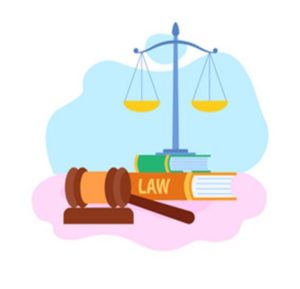 Carole Levine October 6, 2025
Carole Levine October 6, 2025
I am asked all the time about the “power of the courts” to be a check on what is happening in our country. I assume that most people are asking if the courts can rein in the Trump administration’s overreach and power grabs that seem to be taking away rights and freedoms that belong to each of us. My response is, for the most part, slow and measured because the courts are and have been doing a most excellent job of upholding our Constitutional rights and protecting all people’s rights and freedoms. Most of these court rulings are coming from lower federal courts, not the US Supreme Court. And most of these rulings will not be further contested. They will stand as the interpretation of US law and our Constitution. But they will not get a lot of press coverage unless the ruling is further challenged. What does get covered is when the US Supreme Court, the highest court in our nation, upends one of these rulings. And that, sadly, seems to be happening with some frequency and without much explanation, as most of these rulings have come through the “Shadow Docket” and, therefore, do not require an explanation.
What this has caused is great confusion (and in some cases seeming anxiety) among lower court judges who depend on the Supreme Court rulings, explanations and interpretations to guide their rulings. When the Supreme Court reverses a lower court decision without explanation, sending a case back for further consideration, it leaves those lower court judges with limited tools and options for rehearing cases. It has seemingly also caused tension between the Supreme Court Justices themselves as seen in an emergency-docket dissent by Justice Kagan where she blasted the court’s conduct this year, writing that the emergency docket should not be used “to permit what our own precedent bars” or “to transfer government authority from Congress to the president, and thus to reshape our nation’s separation of powers.”
This Administration is working hard to get ahead of any upcoming Supreme Court hearings and eventual decisions that might upend its implementation of the core concepts of Project 2025, a conservative effort to reshape the federal government of the United States and consolidate executive power in favor of right-wing policies. It has been difficult for the Trump administration to work with this Congress to pass legislation that will put in place laws and policies that support the Administration’s goals. Members of Congress must face elections by constituents who will hold them responsible for new laws that they find are “not what they expected” when they last were voted into office. With that in mind, much of what is being enacted, is being done by Presidential Proclamation, rather than by acts of Congress.
If one uses the implementation of tariffs as an example here, they are now being instigated under a separate trade authority rather than the tariffs that will be at issue in the Supreme Court case that will be heard this term. Now tariffs are being implemented under section 232 of the Trade Expansion Act of 1962 rather than the International Emergency Economic Powers Act. In doing so, because this is a separate trade authority, it is unlikely that the Court would find for those who would contest the Administration’s right to bring these tariffs.
The lower courts are also ruling against the Trump Administration’s overreach to use military and martial law in civil affairs that states and local governments are capable of handling. Just this week, in Oregon, U.S. District Judge Karen Immergut found such an order was necessary. She stated in her ruling that stayed bringing federal troop into Portland, Oregon: “This historical tradition boils down to a simple proposition: this is a nation of Constitutional law, not martial law. Defendants have made a range of arguments that, if accepted, risk blurring the line between civil and military federal power—to the detriment of this nation.” It should be noted that Trump appointed Immergut to the District of Oregon during his first term.
The first Monday in October begins the next term of the U.S. Supreme Court, and this term may prove to be a bellwether for the direction of our nation. The docket includes cases on the integrity of our elections and the timing on counting ballots, as well as racial gerrymandering. The docket will also include cases on presidential powers, tariffs, transgender athletes, guns, race, campaign finance law, gay “conversion therapy,” religious rights and capital punishment. If you care about an issue, it is likely to come before the Court this session. But decisions from this Supreme Court may not be handed down until spring of 2026. And, while we can all listen in on the hearings (go to www.supremecourt.gov and check out the link to Oral Arguments which start at 9:00 am central time) and try to guess which way the Justices are leaning, until a decision is issued, we never really know.
In the meantime, it is important to pay attention to all of the courts and their decisions, not just the Supreme Court. As noted above, some important decisions are made and not always disputed beyond these courts. No matter who appointed these federal judges, they all took an oath to uphold the Constitution of the United States. Fortunately for all of us, most of them take that oath seriously.
